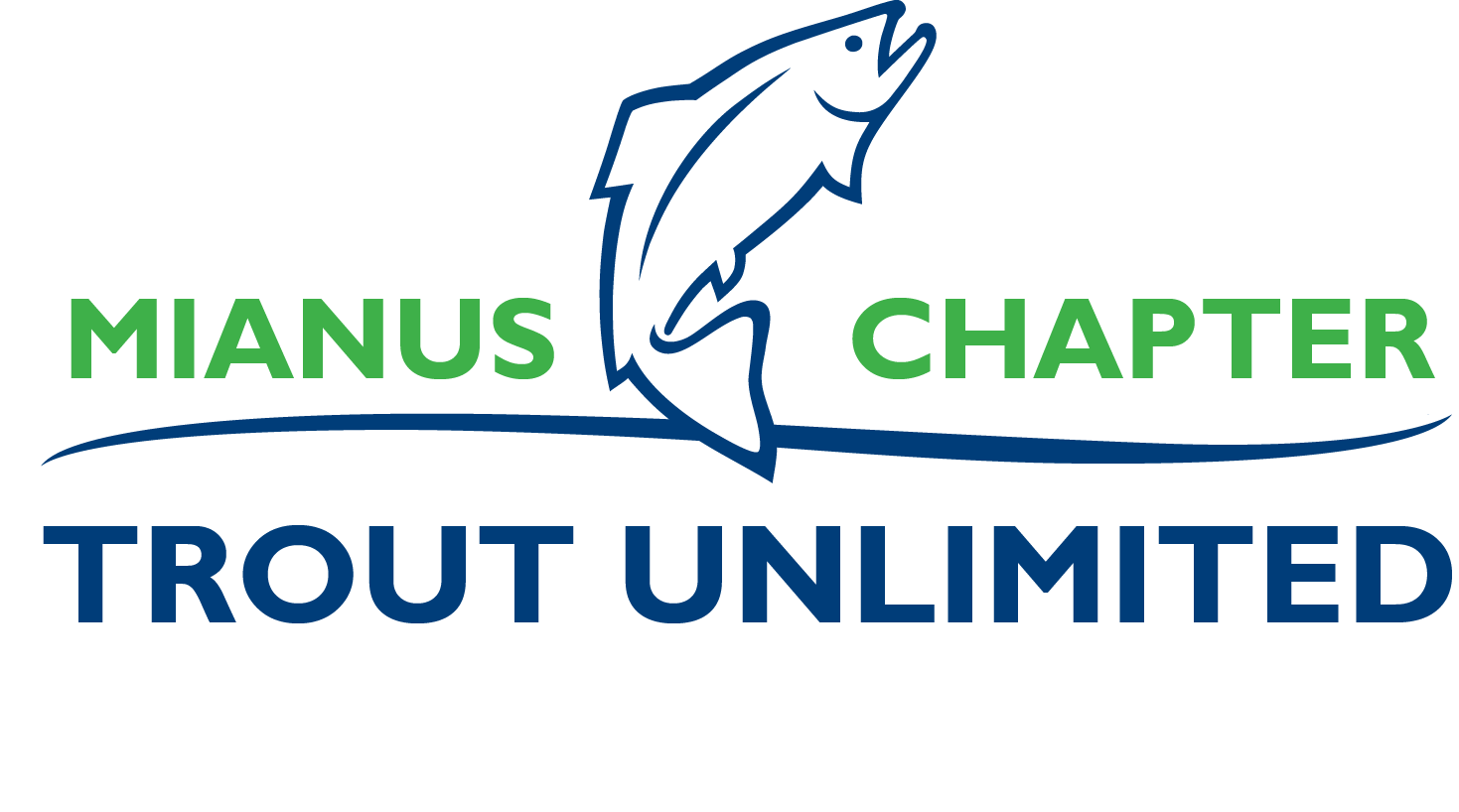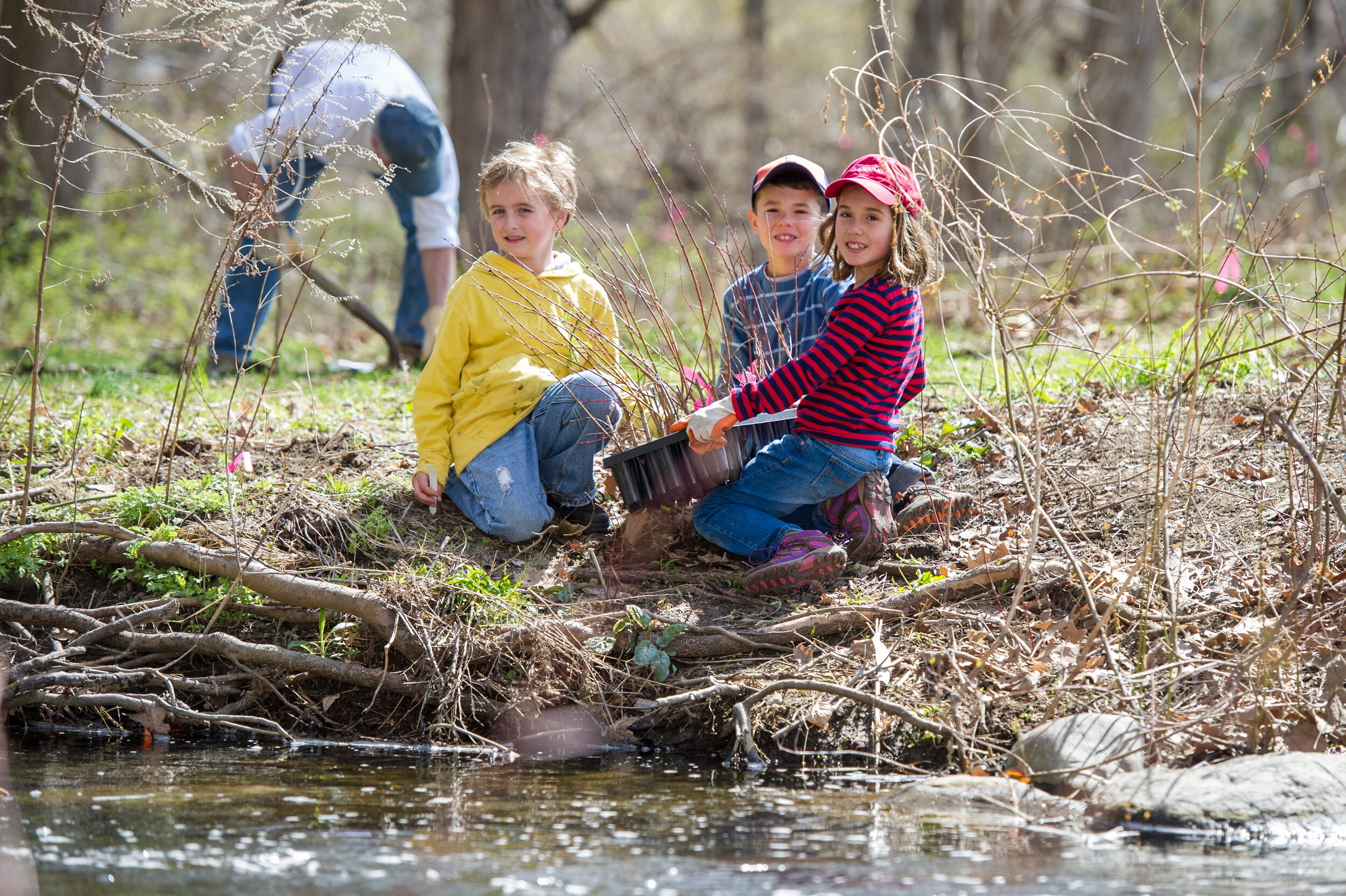Photo by Lawrence Frank
RIVER RESTORATION
WE MAKE FAIRFIELD COUNTY’S RIVERS HEALTHIER
For more than four decades, the Mianus Chapter has been working to protect, reconnect and restore the coldwater rivers and streams in lower Fairfield County.
In just the past 10 years, our chapter volunteers and supporters have:
Contributed more than $750,000 for river restoration work
Provided more than 25,000 volunteer hours on river projects
Planted more than 5,000 native trees and shrubs along local rivers
Rebuilt in-stream habitat on more than 2.5 miles of stream
Picked up more than 20 dumpster loads of trash in and along rivers
Support our river restoration work today! As an all-volunteer organization, we need your time, expertise and donations to continue our great work!
PROTECT, RECONNECT & RESTORE
Our river restoration work uses Trout Unlimited’s “landscape approach” to conservation in order to address the many issues impacting the health of our rivers, streams and the watersheds in which they flow. It is not enough to simply plant trees along a river to reduce erosion and shade and cool the water. Nor is it adequate to just focus on removing dams and culverts that block fish migration. And just reducing the volume of polluted stormwater runoff flowing into streams - while positive - on its own is not enough to turn the tide.
To truly restore our local rivers, we must do all of the above - and more - so that the entire ecosystem is brought back into balance.
Not only are we working to repair the damage caused by historic activities such as logging, agriculture, industry and development, but now we are also driving to build resilience into our rivers and streams so they can withstand the coming pressures of man-made climate change and the expected increase in droughts, floods, temperature and volatility in the coming years and decades.
PROTECT
The best and most effective and affordable way to restore a river is to keep it from being damaged - or prevent further habitat degradation - in the first place. Intact and functioning forests and meadows surrounding a stream provide critical water quality services by filtering, storing and cooling rainwater and snowmelt. It’s nature’s way of creating healthy streams and nothing works better. To protect local rivers we:
Support the purchase and protection of open space throughout lower Fairfield County.
Advocate for stronger municipal wetlands and zoning regulations related to development - especially stormwater runoff management, site coverage limits, and construction near wetlands and watercourses.
Fund and conduct water quality monitoring efforts throughout the region to establish baseline knowledge of existing conditions, identify and prioritize restoration projects, and track changes over time.
RECONNECT
Over the course of 300 years, we have built tens of thousands of dams across rivers in Connecticut and surrounding areas, dropped roads, driveways and culverts across streams, and disconnected so much of the protected, intact headwater habitat from the main stem rivers. Barriers like these not only block fish passage - impacting spawning and survival - but also trap important sediments and nutrients from moving downstream and change the temperature and chemistry of the water in the river. Our chapter’s reconnection work includes:
Leading stream assessments, where trained volunteers walk up streams recording and photographing barriers.
Working with private landowners to remove small dams which no longer serve a purpose.
Partnering with others on the removal of larger dams throughout our watersheds.
RESTORE
Photo by Lawrence Frank
Much of the river habitat in lower Fairfield County has already been degraded by centuries of human activity. Chief among the damage to the streams in our region are lack of riparian buffers along rivers and streams, stormwater runoff from parking lots, road and roofs, and wide, shallow streambeds created by channelization and exacerbated by recent flash flooding due to climate change. Our efforts are focused on restoring these damaged stream segments to they can regain their historic functionality and provide the critical habitat needed by trout and other aquatic life. Our restorations efforts include:
Planting native trees to reduce erosion and shade and cool the streams.
Creating in-stream habitat structures which mimic natural processes to improve river health.
Stabilizing streambanks to prevent erosion with toe wood and conifer revetments.
DRIVEN BY SCIENCE
A volunteer “River Ranger” helps conduct a stream health assessment by measuring areas of erosion and other damage.
All of our restoration work, whether removing dams, planting trees or rebuilding in-stream habitat, is driven by science which helps us identify the core issues impacting the health of a specific river or stream segment, and address those problems with the most up-to-date conservation solutions available. In order to understand how we can help restore a river - and to assess the impact our work is having on stream health - we conduct the following types of science and monitoring activities throughout the lower Fairfield County region:
Stream health assessments using the Trout Unlimited RIVERS app.
River temperature and flow studies using the latest technology.
Trout population studies using electro-fishing and tagging.
Water quality studies through the collection and identification of aquatic insects.
Our chapter also actively funds and supports additional science and monitoring efforts throughout the region by supporting the work of partner nonprofits such as Save the Sound and Harbor Watch / River Watch at Earthplace.
We also work hand--in-hand with the Connecticut Department of Energy and Environmental Protection and municipal staff to ensure that their efforts to assess water quality are supported by the communities that they serve.






